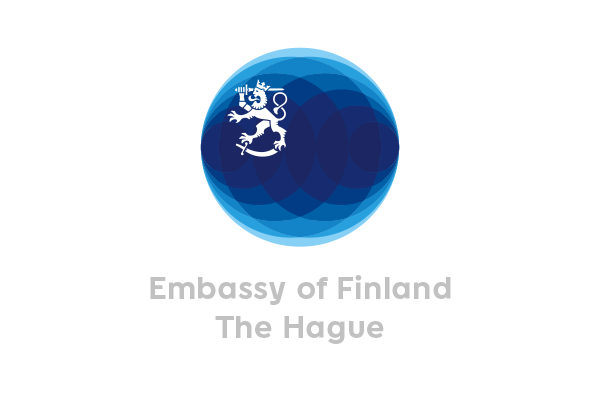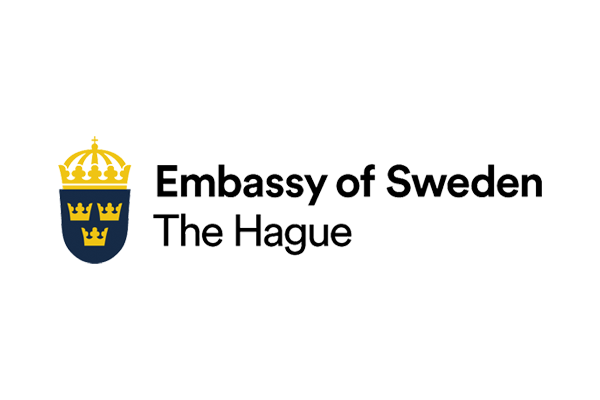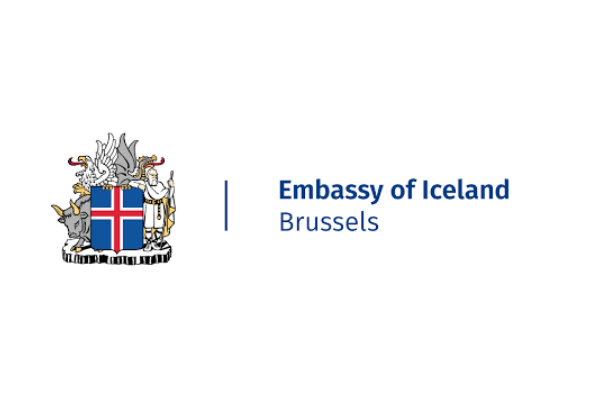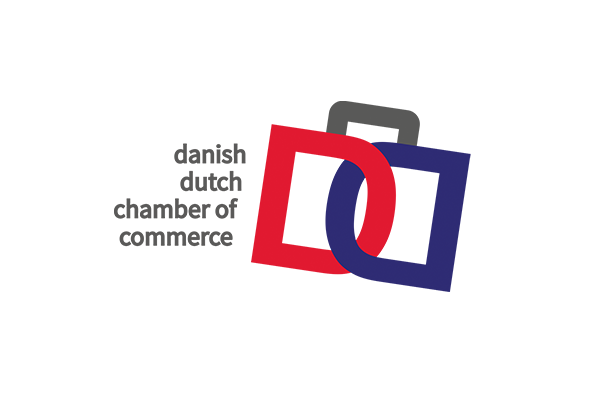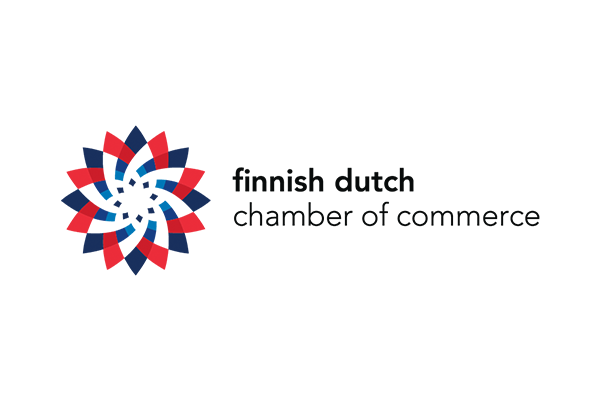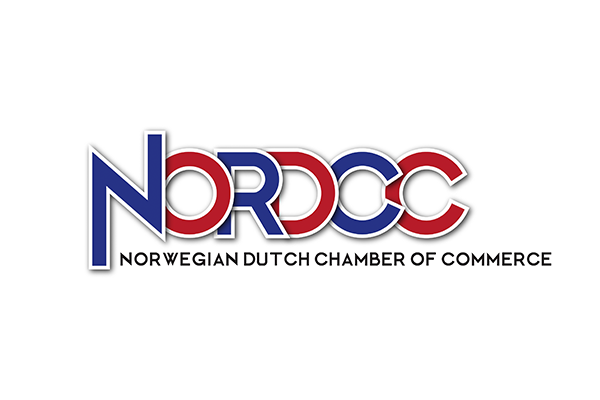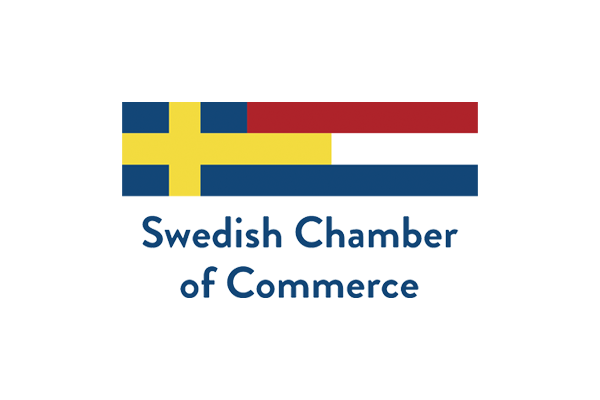Looking back at the Nordic Circular Economy Series – WHAT’s NEXT?
By Andrea Orsag, co-founder of MissionC and moderator of the webinar series
The whole world was making plans for the year 2020. So much vision for a sustainable world, so many plans to push Circular Economy forward. When we discussed Circular Economy during our annual Nordic Circular Economy Summit back in February, the futu
re seemed bright. Shortly after, the whole world has been hit by COVID-19, an unprecedented pandemic that challenged everything. Many countries closed their borders, cities went into the lockdowns, people moved their work from busy offices to own homes. Physical and social distancing rules were put in place. Restaurants, stores and gyms closed their doors. Events including Tokyo Olympic Games and Dubai Expo were canceled or rescheduled, many activities and plans put on hold. So many things have changed! We started to wonder what this will mean for our future and all the plans to make this world a more sustainable place where the planet is healthy and people can thrive.
How will the future look like post COVID-19? What will be the role of Circular Economy?
The Nordic Chambers of Commerce, The Nordic Embassies in The Netherlands, representation of the European Commission to the Netherlands and MissionC joined forces to explore what has changed since February and what to foresee once the pandemic gets under control. #NordicCEWhatsnext series were born. Throughout the month of May 2020, we organized and hosted 3 webinars diving into the Leadership insights from Think Tanks, Corporate world, European Commiss
ion and ambassadors of the Nordic countries.
During our first webinar taking place on 11th May 2020, Freek van Eijk, Director of Holland Circular Hotspot, Marthe Haugland, Senior Innovation Advisor Nordic Innovation, Cathrine Barth, Co-Founder CircularNorway and Harald Friedl, former CEO of Circle Econ
omy, currently its board member and lead for the special projects at COP 26, shared their views on what has changed since all those exciting plans that were in place in February and what is the way forward.
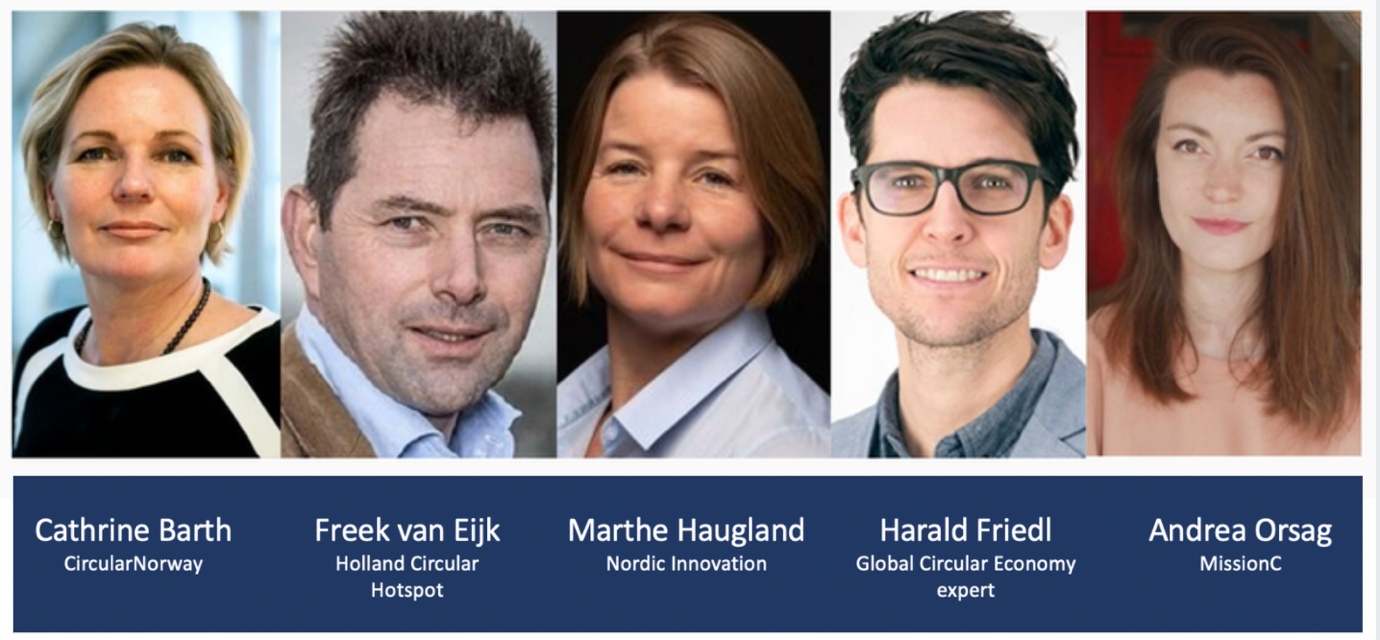
The pandemic revealed flows in supply chains and the overall dependency on resources. Social inequality became even more apparent as not everyone has financial buffer, resources and conditions to wait out the situation or work from home. This whole situation is closely linked to how we treat the environment and going back to “normal” is not an option. We’ve learned that the next year will be extremely tough for new circular start-ups but in the long run the need for a CE is greater than ever. Freek highlighted the role of collaboration across the sectors and borders, Harald talked about leadership, Marthe pointed to the crucial role of the cities and Cathrine voiced out the need to change the overall narrative for the world post COVID-19.
What were the main conclusions?
- The only way forward for Europe if we want to ensure a livable inclusive future is a Green Recovery based on supporting businesses and initiatives helping to lower emissions and creating a more equal society for all – with the use of technology, digitization and green strategies
- Role of Circular Economy is even more important now than ever since it can help businesses to future proof their strategy, engage stakeholders including the customers in new ways while better capturing the value of resources: a design for longevity, repairs, modularity and sharing. During those times the demand for office supplies to be used at home grew up. Ahrend, a producer of office furniture, supplied revitalized chairs quickly via Ahrend Reuse, because the chairs are already there: they don’t need to be produced. Circular Economy example in practice
- We need leadership – on European, country and local level to collaborate and cooperate, build on what works, scale the solutions and act NOW
- Taxing rules and the redistribution of subsidies needs to change – to increase the value of resources, motivating the reuse and preventing waste and pollution. Ex’Tax project remains an inspiration here
- There needs to be a new narrative and story to give direction to the possible future we strive for, why it matters and how everyone is a very important part of it: System Change, Business Change and also staying true to the personal values and acting on them
“We always say that CE is 20% technological innovation and 80% social innovation. When talking about social innovation I am hinting also at awareness, behavior change and the willingness to engage in new collaborations. Maybe this can be the big win from COVID 19. A massive awareness of dependencies, a need for more resilience not only for health issues but also for crises that are waiting around the corner related to Climate Change and resources, a re-appreciation of human labor, clean air and a stronger desire for a livable environment.” Freek van Eijk
Learn more about Nordic Innovation and find out about their programs and initiatives here.
Explore views of Freek van Eijk here and learn about Holland Circular Hotspot here. You can find more information about Circular Norway activities further here. Harald Friedl has started Post Covid Leadership webinars. Keep an eye on his upcoming insights by following him on LinkedIn and Instagram.
We continued the discussion with the Corporate world representatives: Pär Larshans – Chief Sustainability Corporate Responsibility & Public Affairs Officer at Ragn-Sells, Eija Hietavuo – Senior Vice President Sustainability at Stora Enso and Jon Christopher Knudsen – Vice President at Aker Solutions. They shared with us how the COVID-19 impacted their companies and whether Circular Economy has a spot in their recovery plans.
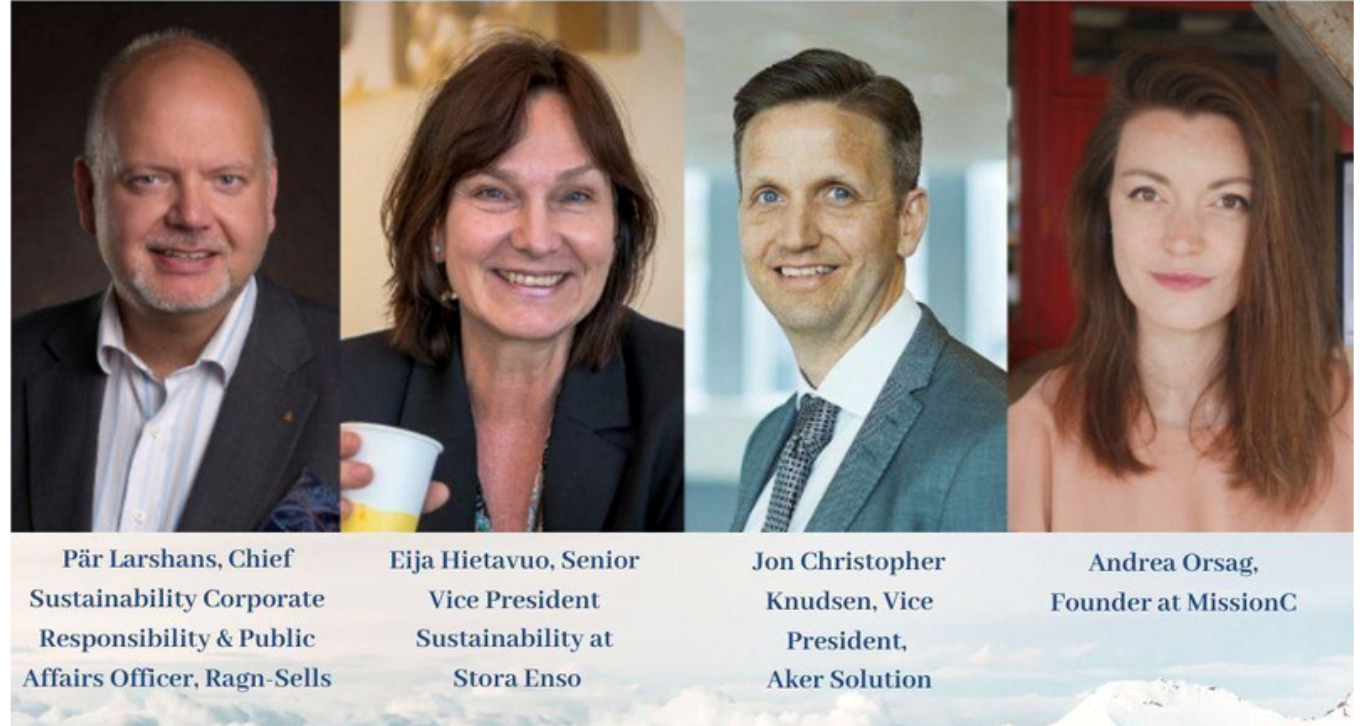
We discussed the recovery of the materials – from flying ashes while waste burns, through concrete, CO2 and also why is it important to take a close look at the plastics. It’s not only about the recovery of the materials but about the design enabling longevity, reuse, repurposing and recovery. And also matching the demand with the supply, having an infrastructure in place and regulations giving a clear signal of what direction to go.
Does Circular Economy have a place in a corporate world post COVID-19 and how does it look like?
- Despite the current challenging situation when business and supply chains are disrupted, this is the time to rethink the business purpose and reshape it in a way that will be beneficial for people and planet as well, not just the profit
- We need to design out waste and pollution starting by rethinking the products, materials they consist of and what is happening with them at the end of their use and at the end of their life
- There is a need to create a regulatory framework enabling infrastructure and ecosystem that incentives reuse and secondary resources over extraction of the virgin resources
- Large industrial operations striving to reduce their CO2 emissions footprint need to embed carbon capture and storage technology on the top of efficiency initiatives – it is already available. Concrete is responsible for 5-8% of global CO2 emissions on its own and construction business will continue in the coming years due to the population increase and more people moving to cities
- The overall system change is needed and therefore there is not a single company that can accomplish transition towards Circular Economy on their own. The ecosystem consists of many diverse players that interact in different ways and therefore COLLABORATION is key to making this transition a success
You can re-watch the discussion here.
Read more about how Ragn-Sells’s circular nutrient company EasyMining takes the next step by setting up the first Potassium plant in Sweden, a 50+ million EUR investment here. Today the use of mineral fertilizers causes 3 % of the global CO2 emissions. Find out more about the processes, where by recirculating the nutrients Ragn-Sells/EasyMining produces a CO2 and Cadmium free fertilizer here. Find out more information about CCS Test Program Aker Solutions starts at Preem Refinery in Sweden here and learn more about their carbon capture and storage related solutions here. Explore with Stora Enso 5 ways of how renewable materials can contribute to a more sustainable market growth here.
We concluded the trilogy of the webinars with Rozalina Petrova, Member of the Cabinet of the EU Commissioner for Environment, Oceans and Fisheries Virginijus Sinkevičius. She shared with us what will be the role of Circular Economy in the green recovery of Europe, shortly before the European Commission Recovery plan for Europe has been launched. We also received statements from the four Nordic ambassadors to the Netherlands: Ambassador of Sweden H. E. Annika Markovic, Ambassador of Finland H.E. Päivi Kaukoranta, Ambassador of Norway H.E. martin Sørby and Ambassador of Denmark H.E. Jens-Otto Horslund. They have all shared with us the latest developments in their respective countries regarding Circular Economy and Renewable Energy.
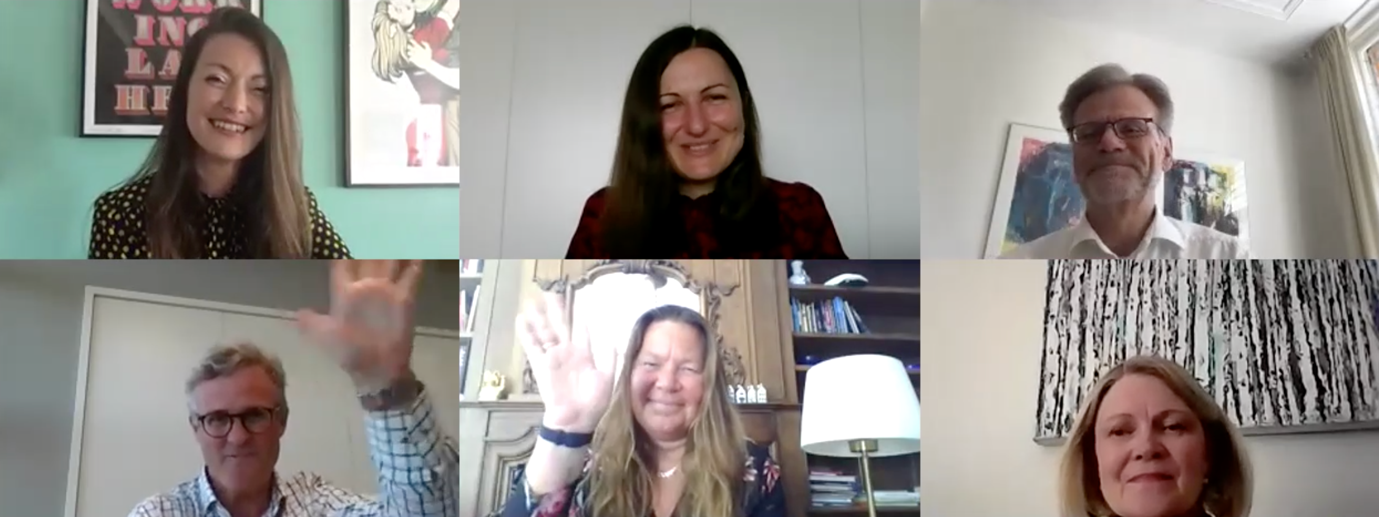
- Despite the challenging times of COVID-19 and related economic decline, we need to ensure that the recovery on the EU level is focused on advancing digital and sustainable transition
- European Commission is aware that it has a big role to play creating regulatory framework enabling such transition, building a more resilient European Union that can be prosperous and reach its goal of becoming carbon neutral by 2050
- The European Commission was busy putting together a plan to help the EU economy recover from the COVID-19 crisis. The Recovery Plan for Europe has been released on the 27th of May 2020 and you can learn more about it here. It includes various financial instruments, social tools and employment boost programs
- Green Deal plays an important role in the economic recovery. Farm to Fork strategy aiming at making the food system healthier and more sustainable as well as strategy to protect biodiversity have been launched last week and Circular Economy Action plan already in March 2020
- The Nordic ambassadors presented their respective country’s strategies and initiatives such as updated roadmap towards Circular Economy in Finland, commitment to electrification and product design in Norway, Circular Economy policy in Sweden and building two large green energy islands in Denmark
- The recovery and shaping the green future based on renewable energy and circular economy is not limited by the EU borders, collaboration among nations is needed to ensure a thriving planet for us all
“We believe it’s very important to have a recovery plan that puts the EU on sustainability path and interests of EU citizens at its heart” Rozalina Petrova
You can re-watch the discussion here
Denmark has in place the most ambitious climate target in the world, to achieve 70% CO2 reduction by 2030 and become climate neutral by 2050. The country plans to build two giant energy islands as a part of the most ambitious offshore wind project. It will be the biggest single infrastructure investment in history. Besides the new climate plan will create thousands of jobs. The project will be financed through public-private partnerships with the majority coming from private investors. Read more about it here. The Norwegian government is currently working on a circular economy strategy to be launched by the end of 2020. Norway is a front-runner in the electrification of the transport sector and you can read more here. This in itself is important to limit greenhouse gases, but more importantly, the new strategy will address the product design and recycling of batteries and fuel cells to make it sustainable and circular. Finland was the very first country to launch a Roadmap towards the Circular Economy in 2016 and it has been updated in 2019. You can learn more about it here Its implementation had just begun when the corona crisis hit. A special working group looks specifically into the energy sector, built environments, industry and food production has been established to prepare a recovery plan. Circular economy is named as one of the cross-cutting themes, as it helps to respond to both climate and biodiversity crises at the same time. Sweden has established a Circular Economy delegation in 2018 and developed a national Circular Economy strategy and programs. Learn more about smart city program here. The embassy put this also in practice and replaced the take, make & dispose model with the long-lasting design, reuse, repair and recycling – through organizing sustainable events such as Fashion Re-dress event with a clothes swap.
“Circular Economy is a concept and it must be a part of our DNA in all parts of society in order to work. And I hope we can move along together, all of us, that way” H.E. Jens-Otto Horslund
What have I learned during those webinars? Despite the difficult times the world is currently facing – combing COVID-19 pandemic, economic recession and social unrest, there was a lot of vision and hope for a world where the planet and we people will thrive. Collaboration as a key word dominated every single discussion, with strong leadership paving the way for a systemic change on a local, national and international level. The role of Circular Economy where resources will be used in a more efficient way, reused and better utilized will be crucial. The transition towards the Circular Economy will revolutionize the overall consumption. It requires however a new way of thinking, a new way of looking at existing products, rethinking designs in an innovative way for enhancing longevity and creating new relationships with customers and markets. According to the Global Circularity Gap report the world is currently 8,6% circular so there is a big opportunity to be realized. This will help us not only rebuild in a more sustainable way from the current situation but also to fulfill the Paris Climate Agreement and Sustainable Development Goals. Here. In Europe. Around the Globe.


